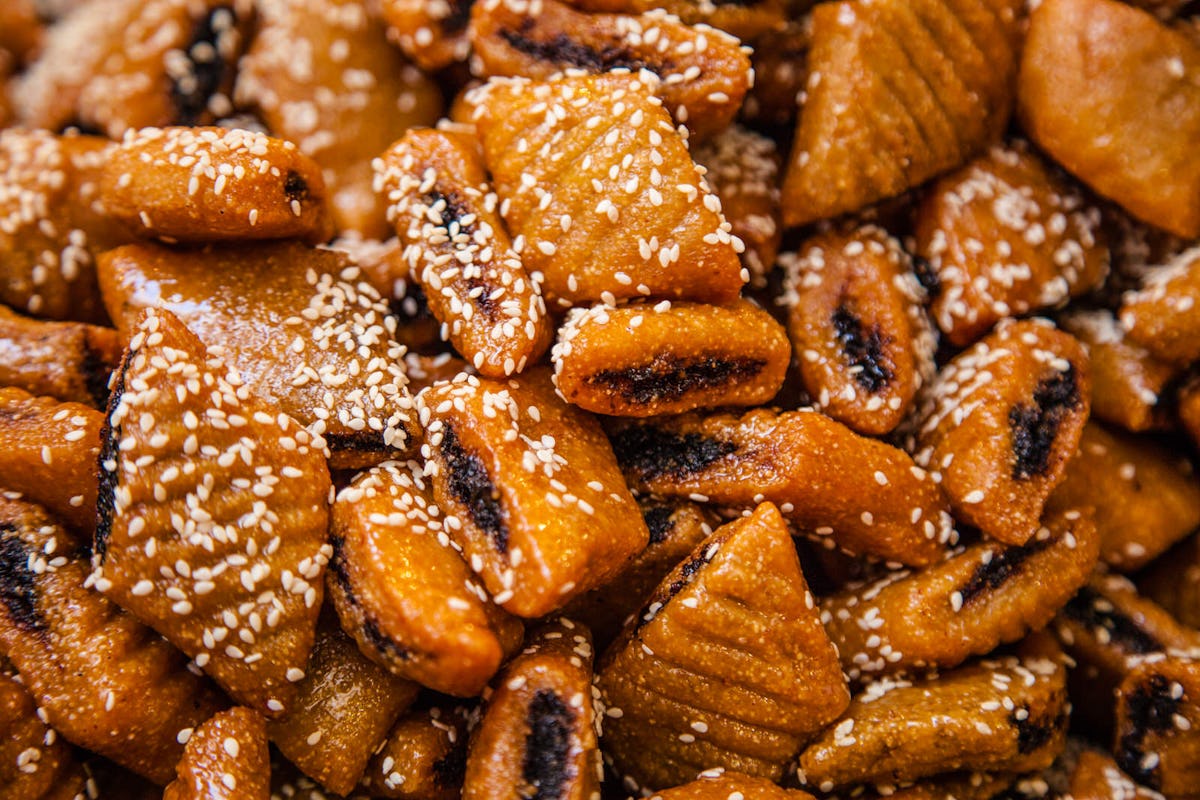
A semolina-based pastry stuffed with dates or figs, then fried and dipped in honey. Makroud is especially popular during Eid celebrations and is often scented with orange blossom water.
An eye-catching swirl of halva, nuts, and honey, topped with pistachios and often decorated with edible silver or gold. Zriga is both a sweet and a piece of art.
The Tunisian take on a doughnut! These fluffy fried dough rings are sprinkled with sugar and sold piping hot on beaches or in city streets — especially in Sidi Bou Saïd.
Small deep-fried ring cakes, glazed with a honey-lemon syrup and sometimes topped with sesame seeds. A staple at weddings and family gatherings.
A rosewater-scented biscuit filled with almond paste, delicately shaped into a ring. This melt-in-your-mouth delight is often served during Ramadan and festive occasions.
The Tunisian version of this classic dessert features layers of filo pastry, almonds or pistachios, and a generous drizzle of syrup flavored with rose or orange blossom water.
A unique, seasonal dessert made for the celebration of the Prophet’s birthday (Mawlid). It's a creamy pudding made from Aleppo pine seeds, topped with custard and beautifully garnished with nuts and candy.
A crumbly shortbread-style cookie made with flour, ghee, and sugar. Sometimes enhanced with chickpea flour or almonds, it’s a dry treat that pairs perfectly with coffee or tea.
Originally a nourishing blend of roasted cereals and spices, sweet Bsissa is made by mixing the powder with olive oil and honey. It's often eaten for breakfast or as an energy-boosting snack.
These bite-sized treats combine dates, nuts, coconut, and chocolate into chewy, irresistible snacks often served during Eid or special dinners.
Tunisian sweets aren’t just delicious — they’re part of the country's hospitality, culture, and celebration. Whether you have a sweet tooth or simply want to experience something new, these desserts are an essential part of your culinary journey through Tunisia.